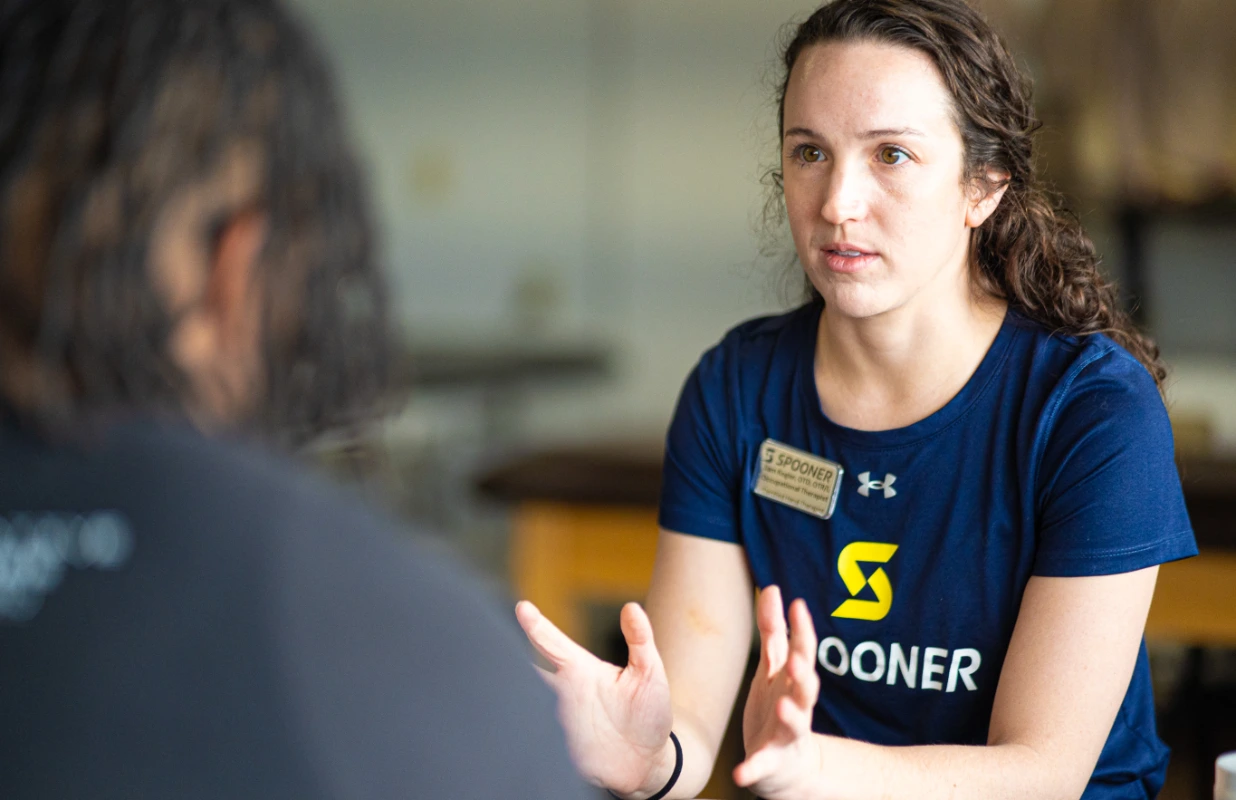By: Samantha Kogler, OTD, OTR/L, CHT
A Certified Hand Therapist (CHT) goes through countless hours of treating and studying upper extremity injuries and dysfunctions to be able to help their patients move and feel their best. We talked to Samantha Kogler, OTD, OTR/L, CHT, about her experience of becoming a CHT:
Before I was licensed as an occupational therapist, I knew I wanted to pursue hand therapy. During school, I was able to research flexor tendon injuries and recovery, so this is what initially sparked my passion for treating hands. I performed my capstone in hand therapy with Spooner Surprise, which further solidified my going into this field.
I jumped into hand therapy immediately as a new OT. I’ve had some wonderful mentors, like Holly Hussey, MOTR/L, CHT, who have guided me. They not only helped me know how I could, and still can, better treat patients, but they also gave me ideas about treatment. They have also instilled in me more knowledge, such as how to splint and provide wound care, which helps me provide more services to my patients.
To become a Certified Hand Therapist (CHT), you have to be a licensed occupational or physical therapist for at least three years. You must also treat hand and upper extremity injuries for 4,000 hours or more before you can even apply to the test. When you apply, you have to have somebody, like a clinic director, confirm the hours you have worked. Once the application is approved, you sit for a four-hour test. This exam tests your clinical skills as well as theory for upper extremity rehabilitation.
When I graduated as an Occupational Therapist, I knew that my goal was to become a CHT. I took the test as soon as I could. To prepare, I took a few continuing education courses for hand therapy during my first year of treating. During my second and third years, I decided to take a 15-month program with Evidence in Motion to prepare for the test. 6 months prior to my test, I studied intensely for the CHT test. There was a lot of preparation involved, but I was dedicated to passing the first time, and it paid off!
Through this process, I saw myself evolve in how I was treating my patients, which makes sense. I have a larger knowledge base now, so I can apply what I know now to different injuries and dysfunctions present in my patients. I also know that passing this test has instilled a new-found confidence in me. Not only because I passed, but also because I can use my knowledge base to help my patients move and feel their best.
Schedule an appointment with Samantha or another Spooner hand therapist today!

